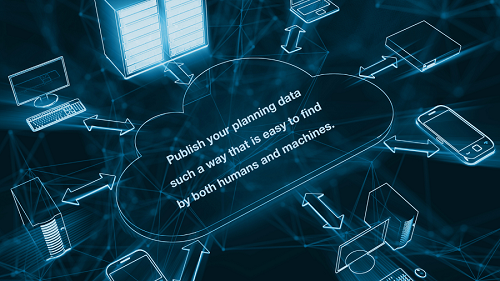By Euan Mills MRTPI
 Technology’s progress was once a slow and steady march, but it has now become a tsunami of transformative change. From the early days of the internet 30 years ago, which revolutionised how we send and receive information instantly, to the current rise of artificial intelligence that generates strategies, ideas, and policies from vague prompts, the power and impact of technology have grown exponentially. Today, technology is not just an option; it is a necessity.
Technology’s progress was once a slow and steady march, but it has now become a tsunami of transformative change. From the early days of the internet 30 years ago, which revolutionised how we send and receive information instantly, to the current rise of artificial intelligence that generates strategies, ideas, and policies from vague prompts, the power and impact of technology have grown exponentially. Today, technology is not just an option; it is a necessity.
Yet, as planners, we have been resistant to this change. Our transition from sending paper forms and boxes of reports through the mail to using email and digital storage was slow. Similarly, we have been sluggish in adopting 21st-century ways of working.
The reasons for this resistance are complex, but at the core is our cultural attachment to reports. We treat these documents as solutions to most problems. From Design and Access Statements to Environmental Impact Assessments, when we need information, we commission a report. The issue isn’t that these reports are unnecessary—though that is sometimes the case—but that we package all the information in lengthy documents filled with introductions, executive summaries, conclusions, and hundreds of pages of prose. These become so cumbersome that few of us read them cover to cover.
Over the last few decades, the report-writing industry has grown feverishly. The industry’s response to any new policy is to create another report. An outsider might think that planning is primarily about writing reports. It’s no surprise that the rise of Large Language Models is disrupting these practices; with just a few vague prompts, you can generate a report nearly indistinguishable from those produced by many consultancies.
There is a better way that will make the planning system more efficient and transparent and fit for the 21st century. As articulated in the 2020 Planning for the Future white paper, the planning system needs to move “from a process based on documents to a process driven by data.”
 This next step is more fundamental than the transition from postal services to email. It requires us to move away from our analogue ways of working to a completely new approach to how we plan, create, and consume information. We need to think more like librarians than prose writers, considering how the information we create will be used, catalogued, updated, and distributed. This means creating high-quality, standardised data rather than lengthy documents.
This next step is more fundamental than the transition from postal services to email. It requires us to move away from our analogue ways of working to a completely new approach to how we plan, create, and consume information. We need to think more like librarians than prose writers, considering how the information we create will be used, catalogued, updated, and distributed. This means creating high-quality, standardised data rather than lengthy documents.
We also need to understand the fundamental building blocks of the web - the foundational technology that supports most new advancements today. We don’t need to learn to code or build websites, but we do need to understand how to publish planning information in a way that is easy to find, use, and trust.
This new approach is not about chasing the latest technological trends, such as virtual reality or artificial intelligence. It is about addressing the basics, so we can build solid foundations for more radical changes in the future. Our job as planners is not about technology; it’s about creating places. But technology is how we will do a good job. As the renowned modernist architect Cedric Price said, “Technology is the answer, but what is the question?”
Join us for the upcoming Fundamentals of digital planning Online CPD Masterclass I will lead, where you can learn more about how to harness the technology at your fingertips. Learn how to create and publish planning data such a way that both humans and machines can find and read it on the internet, (and without you writing any coding).


